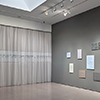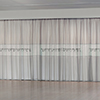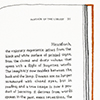Between the Needle and the Book 2020 Click on images to view project. |
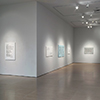 |
 |
|||||||
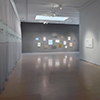 |
 |
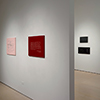 |
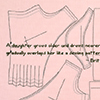 |
 |
||||
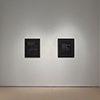 |
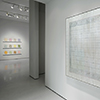 |
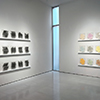 |
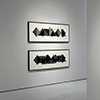 |
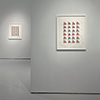 |
||||
 |
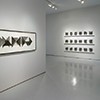 |
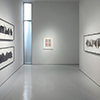 |
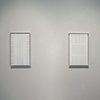 |
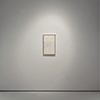 |
||||
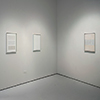 |
 |
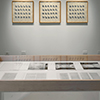 |
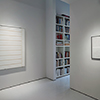 |
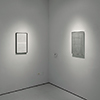 |
||||
[From the press release] McClain Gallery is pleased to present artist Elaine Reichek’s first solo exhibition with the gallery, Between the Needle and the Book. Occupying both of the gallery’s spaces, this two-part show introduces Reichek’s five-decade career like a pair of bookends, juxtaposing her most recent text-based embroideries with sewn paintings and fabric works from the 1970s. For Reichek, embroidering words onto fabric rejoins text to its etymological sibling, textile. In the early 1990s, Reichek began researching the history of the embroidered sampler and sewing new versions of traditional patterns. In her revisionist samplers, she strategically replaces the usual scriptural verse or wise maxim — which young girls learned to sew as part of their education — with alternative literary or historical quotes from a distinctly feminist perspective, whether critical or humorous. Over time, as Reichek appropriated from a wider variety of both textual and art historical sources, her embroideries have expanded beyond the formal bounds of the sampler, even as they continue to employ thread and fabric as fundamental materials. In the gallery’s main space, Reichek presents thirty embroideries from a recent four-year project about the relationship between language and invisibility, which explores how unseen thoughts are materialized, how words often leave things paradoxically unsaid and thus out of sight, and how the past is threaded into and through the present. Each embroidery foregrounds text as the primary motif: in many, the accompanying image is reduced to an allusive or schematic role, while in others the text itself functions as both language and image. As a whole, these works consider the stubborn persistence of analog writing methods at the alleged end of the Gutenberg age, when digital technologies strive to replace paper with glowing screens. By painstakingly rendering a broad range of fonts, scripts, and scrawls with needle and thread, Reichek further encumbers language-generating processes that are otherwise rapidly accomplished. Her sewing techniques slow the hand’s fluidity and extend writing’s manual labor, even as the finished art work belies its time-consuming process. Many of the embroideries deal with techniques of handwriting, ranging from the old-fashioned Palmer method of cursive writing, to digital fonts that imitate these scripts, to autograph samples solicited from family, friends, and artist colleagues. Other works recall the handmade origins of contemporary digital type by reproducing a variety of both serif and sans-serif typefaces. Reichek also reflects on the material history of paper, and deploys her needle to imitate such graphic conventions as the ruled lines of notebook pages or the layouts of mass-marketed books. The texts collated by these works address such ideas as legibility and concealment, the hidden nature of the self, the overlooked legacy of political and social forces, and the invisible realm of dreams, ambitions, and fantasies. Out-of-sight technologies are invoked by the exhibition’s largest work — a long gossamer curtain reconfigured especially for this space — which reproduces the paper-tape copy of Samuel F. B. Morse’s first telegraph transmitted in 1844, sewn here by a century-old industrial chain-stitch machine. The second part of Between the Needle and the Book, installed in the west gallery, focuses on Reichek’s earliest mature works from the 1970s. A decade prior, at Brooklyn College, Reichek had been deeply influenced by her studies with Ad Reinhardt, who taught that every element in a work of art must be accounted for and that self-imposed limitations could yield great variety. Around 1971, as she was working on a group of minimalist abstract paintings, Reichek began using thread as a way to draw. She quickly realized that a line of thread — unlike one rendered in pencil or paint — is actually an embodied line, independent of the canvas support yet physically attached to it, literally piercing the “picture plane.” Only after seeing a series of these paintings, in her first solo show in 1975, did Reichek realize that she had been sewing, and that her “high art” had drifted into the “low art” territory of craft and “women’s work.” The present exhibition assembles two larger and seven smaller examples of these early thread paintings. In subsequent works, Reichek continued to embrace post-minimalist applications of systems-based procedures as well as the gendered connotations of fabric and thread. In particular she prized organdy, the crisp and semi-sheer cotton commonly used in bridal gowns and party dresses, for its ability to suggest a light-infused mutability of form. Two Parallelogram pieces — one in black organdy, the other in pastels — render overlapping planes in isometric projection. Installed in grids on white shelves, each Parallelogram unit is sandwiched between two panels of clear Plexiglas and leans against the wall at a slight angle to emphasize its translucent objecthood. Similarly, in three long Triangles works, overlapping pieces of transparent organdy create a shifting series of commingling geometric shapes. Finally, four examples from the Fan Factorial series seem to revel in the rich color palettes that play out through the alternating layered permutations of four shades of organdy.
|


